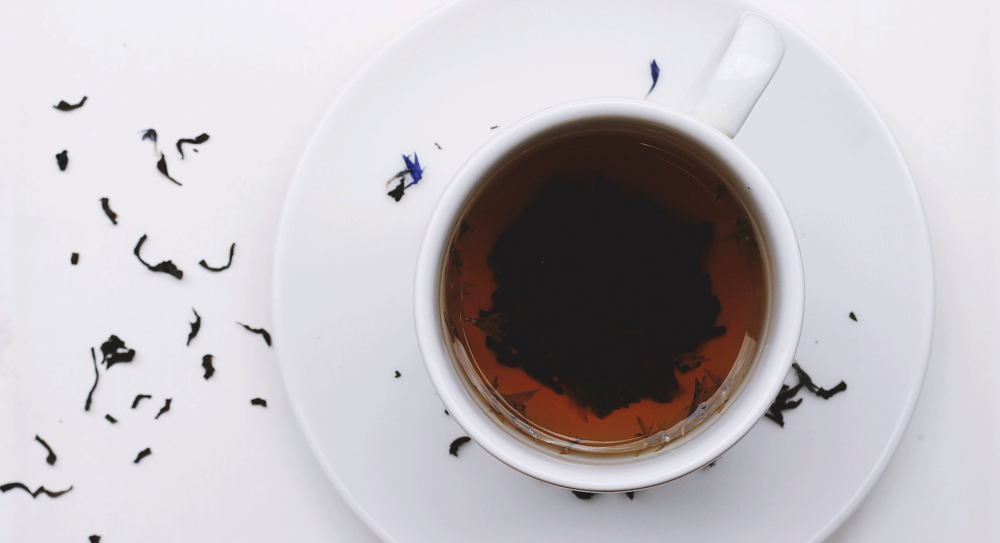Table of Contents
Introduction
Steeping a cup of loose leaf tea is like orchestrating a flavorful symphony, and when it comes to loose leaf tea, brewing it correctly is akin to conducting a masterpiece. So, let’s spill the tea on why brewing it right matters, all while taking a delectable dip into the rich history and cultural significance of tea. Plus, we’ll unveil the purpose of this guide, your key to tea-brewing excellence.
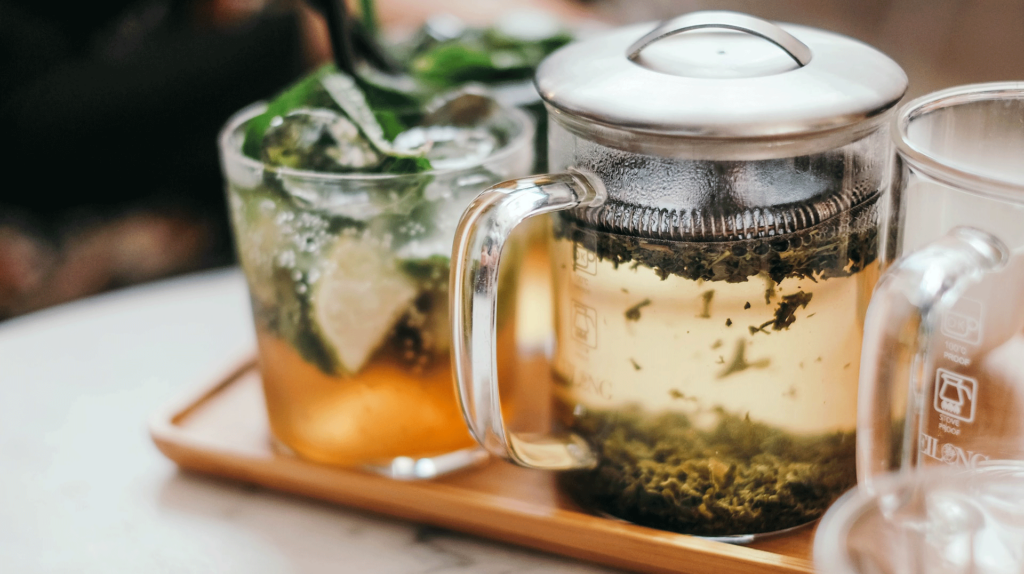
The Importance of Brewing Tea Correctly
The art of brewing tea is a craft worth perfecting, for it’s not just about quenching your thirst. It’s about extracting the full spectrum of flavors and aromas from those delicate leaves. Incorrect brewing can lead to a disappointing cup that misses the mark.
- Flavorful Fulfillment: Loose leaf tea isn’t your average tea bag—it’s a treasure trove of flavors waiting to be unleashed. Brewing it correctly lets those leaves dance to their fullest potential, delivering a cup of tea that’s not just a beverage but an experience.
- The Avoidance of Tea-tragedy: Oversteeping or overheating can turn your tea into a Shakespearean tragedy—bitter and unpalatable. Proper brewing is the hero that swoops in to save the day, ensuring your tea is a star, not a flop.
- Healthful Elixir: Loose leaf tea is renowned for its health benefits, packed with antioxidants and wellness-promoting compounds. Brewing it right preserves these precious elements, so you can sip your way to a healthier you.
- Tailored Taste Experience: Loose leaf tea empowers you to tailor your tea experience. Adjust the steeping time, water temperature, and leaf-to-water ratio to create a brew that matches your taste preferences precisely.
- Tradition and Ritual: Brewing tea isn’t just a mundane task; it’s a ritual that connects you to a rich history and culture. It’s an act of mindfulness, a moment of reflection, and an opportunity to create traditions of your own.
- Eco-friendly Sipping: Loose leaf tea often comes from sustainable sources. Brewing it correctly ensures you extract the most from each leaf, contributing to a more eco-conscious lifestyle.
- Elevating the Everyday: Lastly, brewing loose leaf tea correctly elevates the simple act of tea-drinking to a moment of pure delight. It transforms a routine task into a soul-soothing experience, a moment to celebrate and cherish.
A Rich History and Cultural Significance
Tea, my friend, has a story that spans centuries and continents. From ancient Chinese dynasties sipping tea in reverence to the British afternoon tea parties, it’s a beverage intertwined with tradition, culture, and even diplomacy. Brewing it correctly is paying homage to this global legacy.
The Purpose of This Guide
Now, why do you need a guide for brewing tea, you ask? This guide is your trusty companion on a journey to tea nirvana. It’s here to ensure you unlock the hidden treasures in loose leaf tea, preserving its rich history and cultural ties, all while elevating your tea experience.
So, my tea-loving comrades, brew it right and let your cup of loose leaf tea become a vessel that holds not just liquid but stories, history, and a touch of elegance. This guide is your passport to tea-brewing excellence, a chance to honor tradition, and a key to unlocking the full potential of each leaf in your teapot. Cheers to the perfect cup!
Types of Tea
Along the path we’ll explore various types, their distinct characteristics, and the delightful nuances that set them apart. Each type of loose leaf tea is a unique expression of nature, offering a wide spectrum of flavors and aromas to suit every palate and occasion.
The journey from tea leaf to teacup is a complex one, heavily influenced by both the origin of the tea and the processing it undergoes. These factors have a profound impact on the taste, aroma, and overall characteristics of the final brew. For more information please visit
1. Black Tea
Key Characteristics:
- Full-bodied and robust flavor.
- Deep, dark liquor.
- Strong aroma.
- Highest caffeine content among traditional teas.
Differences: Black tea boasts a bold, malty flavor with hints of caramel and a brisk, invigorating quality. It’s your morning wake-up call.
2. Green Tea
Key Characteristics:
- Light and fresh flavor.
- Pale green or yellow infusion.
- Grassy or vegetal aroma.
- Moderate caffeine content.
Differences: Green tea offers a clean, vegetal taste with notes of seaweed or nuts, depending on the variety. It’s a gentle and refreshing choice.
3. White Tea
Key Characteristics:
- Delicate, sweet flavor.
- Pale and almost colorless infusion.
- Subtle, floral aroma.
- Lowest caffeine content among traditional teas.
Differences: White tea is the epitome of elegance, with a subtle, slightly sweet flavor reminiscent of honey or fresh flowers. It’s a tea for serene moments.
4. Oolong Tea
Key Characteristics:
- Complex and layered flavor.
- Wide range of infusion colors, from light to dark.
- Floral to fruity aroma.
- Moderate caffeine content.
Differences: Oolong tea bridges the gap between green and black, offering a diverse flavor profile that can range from floral and light to rich and toasty. It’s an adventure in every sip.
5. Herbal Tea
Key Characteristics:
- Varies greatly depending on the herbs used.
- No caffeine.
- Aromas can range from earthy to fruity, spicy to floral.
Differences: Herbal teas aren’t technically teas; they’re infusions made from herbs, flowers, spices, and fruits. The flavors and aromas are as diverse as nature itself, making herbal teas a caffeine-free and highly customizable option.
Tea Selection: Savoring Excellence in Every Sip
When it comes to loose leaf tea selection, the choices are as vast as the tea plantations themselves. Choosing the right tea leaves is akin to selecting a fine wine; it can elevate your tea-drinking experience from ordinary to extraordinary. In this segment, we’ll explore the importance of high-quality tea leaves, decode the mysteries of tea labels and packaging, and share some invaluable tips on sourcing and storing your precious tea leaves.
The Importance of Choosing High-Quality Tea Leaves
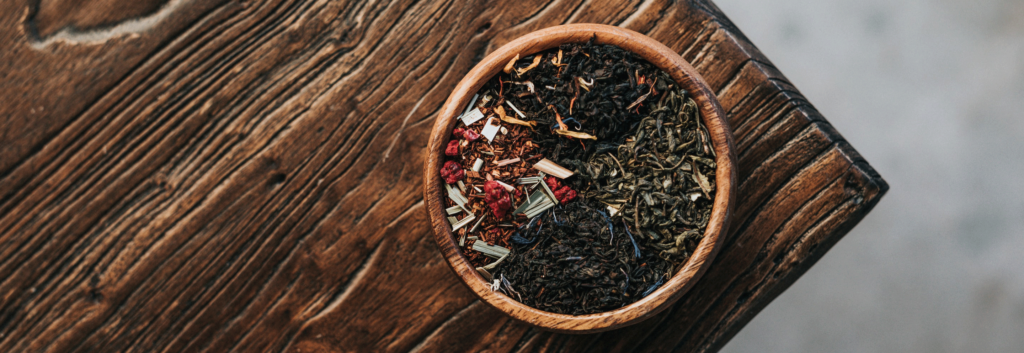
Imagine sipping a cup of tea that transports you to a tea garden, where the leaves bask in the sun and absorb the essence of their terroir. That’s what high-quality tea leaves offer—pure, unadulterated tea bliss. Here’s why it’s crucial:
- Flavorful Fulfillment: High-quality tea leaves burst with flavor. They’ve been carefully cultivated and processed to deliver a complex, balanced taste that lingers on your palate.
- Health Benefits: Quality matters not only for taste but also for health. Premium tea leaves are rich in antioxidants, vitamins, and other beneficial compounds, ensuring you get the most out of your brew.
- Aroma Appreciation: The aroma of high-quality tea leaves is a sensory delight. It can transport you to distant places and enhance your overall tea-drinking experience.
- Ethical Sourcing: Opting for high-quality tea often means supporting ethical and sustainable tea producers who prioritize environmental and social responsibility.
How to Read Tea Labels and Packaging
Tea labels and packaging can sometimes resemble a cryptic code, but deciphering them is key to making an informed choice. Here’s a quick guide for you
| Tea Type | Labels usually specify the tea type (e.g., black, green, oolong, white, herbal). This helps you know what to expect in terms of flavor and aroma |
| Origin | Look for the region or country where the tea was grown. Certain regions are renowned for specific tea varieties, and knowing the origin can provide insight into flavor profiles |
| Harvest Date | Premium teas often include a harvest date. Fresher is generally better, especially for green and white teas, which are prized for their delicate flavors |
| Grade | Some teas may have a grading system (e.g., “FTGFOP” for black tea). Higher grades typically indicate better quality |
| Brewing Instructions | Packaging often includes recommended steeping times and temperatures, helping you brew the perfect cup |
Tips on Sourcing and Storing Tea Leaves
Now that you’re equipped to choose quality tea, let’s delve into sourcing and storing:
- Reliable Sources: Seek out reputable tea suppliers. Specialty tea shops, online retailers, and tea gardens are great places to find quality tea.
- Airtight Containers: Once you’ve got your tea, store it in airtight containers, away from light, heat, and moisture. This preserves freshness.
- Avoid Odor Contamination: Tea leaves are like sponges for odors. Store them away from strong-smelling substances to prevent flavor contamination.
- Use It or Lose It: While tea doesn’t go bad, it does lose flavor over time. Consume it within a reasonable timeframe for the best taste.
Choosing high-quality tea leaves, deciphering labels, and mastering the art of sourcing and storage are all steps on your journey to becoming a tea aficionado. With these skills in hand, every cup you brew will be a sip of pure delight, a fragrant voyage, and a tribute to the world’s beloved beverage.
Essential Tea Brewing Equipment: Unleash the Tea Maestro Within
Brewing the perfect cup of tea isn’t just about having the finest leaves; it’s also about having the right tools for the job. Just as a chef needs quality utensils, a tea enthusiast relies on essential brewing equipment to create that aromatic elixir. In this section, we’ll introduce you to the must-have equipment for your tea-making journey and unravel the purpose each piece serves.
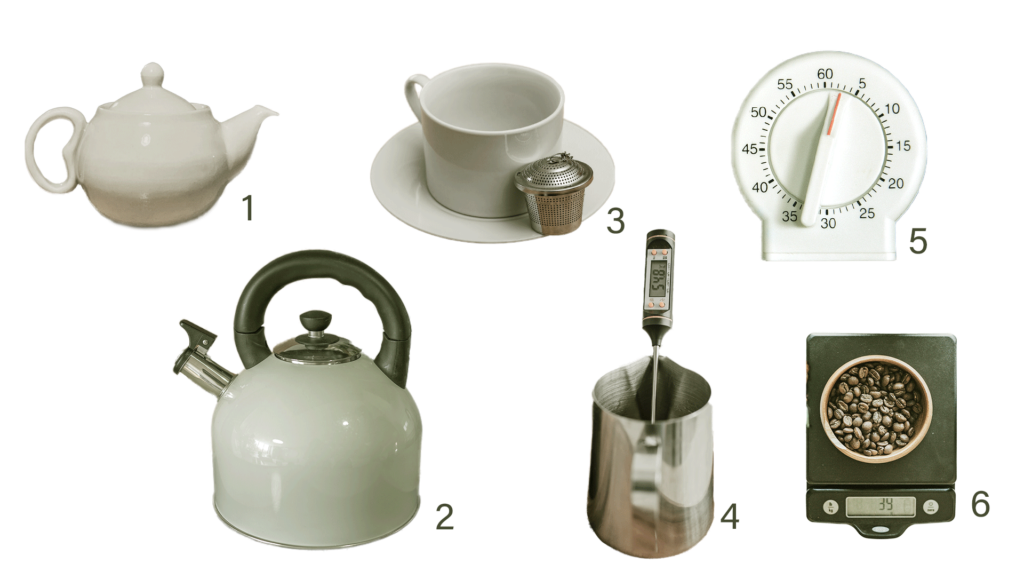
1. Teapot
Role: The teapot is the maestro of your tea orchestra, where leaves and water perform their aromatic dance. It’s where infusion happens, flavor blooms, and the alchemy of tea takes place.
Varieties: Teapots come in various materials like ceramic, glass, porcelain, and cast iron, each influencing the brewing process differently.
2. Kettle
Role: The kettle is your trusty steed, heating the water to the precise temperature needed for your tea type. The right temperature ensures optimal extraction of flavors and aromas.
Varieties: Electric kettles, stove top kettles, and even variable-temperature kettles are available. Choose one that suits your tea-drinking habits.
3. Infuser or Strainer
Role: Infusers or strainers are like tea guardians, preventing loose leaves from turning your cuppa into a botanical jungle. They allow water to flow through while keeping the leaves contained.
Varieties: You can opt for a traditional tea ball, a basket infuser, or even a sleek, in-mug infuser for convenience.
4. Thermometer
Role: Precision is the name of the game in tea brewing. A thermometer ensures your water is at the ideal temperature for your tea type, preventing scalding or under-extraction.
Varieties: Digital thermometers or simple analog ones will do the job. Some kettles even come with built-in thermometers.
5. Timer
Role: The timer is your timekeeper, ensuring you steep your tea for the right duration. Over-steeping or under-steeping can significantly impact flavor.
Varieties: You can use a kitchen timer, your smartphone, or even a simple hourglass timer dedicated to your tea ritual.
6. Scales
Role: For the meticulous tea brewer, scales ensure precise leaf-to-water ratios. They help achieve consistency in each cup.
Varieties: Digital kitchen scales are widely available and easy to use.
Each piece of tea brewing equipment plays a crucial role in the art of tea preparation, allowing you to control variables like temperature, infusion time, and leaf containment. Whether you’re a traditionalist who loves the charm of a ceramic teapot or a modernist who prefers the convenience of an in-mug infuser, these tools are your allies on the journey to tea nirvana. So, equip yourself with the essentials, brew with precision, and let the tea leaves unfurl their secrets in every enchanting cup.
Water Quality: The Unsung Hero of Loose Leaf Tea Brewing
In the realm of loose leaf tea brewing, the quality of water often takes a backstage role, but make no mistake water is the unsung hero that can make or break your tea experience. In this segment, we’ll shine a spotlight on the importance of using fresh, clean water, explore how water temperature and minerals influence tea flavor, and provide guidance on selecting the right water source. For more visit Mastering Tea Brewing: The Cruscial Role of Tea Water Quality.
1. Fresh, Clean Water: The Foundation of Flavor
Importance: Water is the canvas upon which the masterpiece of tea is painted. Using fresh, clean water is paramount because tap water with impurities or staleness can taint the delicate flavors and aromas of your tea.
Guidance:
- Use filtered or bottled water if your tap water has a strong odor, taste, or contains impurities.
- Ensure your water is at its purest, free from contaminants like chlorine, heavy metals, or microbial growth.
2. Mineral Content: The Flavor Enhancer
Impact: Believe it or not, minerals in water can influence the taste of your tea. While some minerals enhance the flavor, others can interfere or dull it.
Guidance:
- Mineral-rich waters, like spring water, can add depth and complexity to your tea, particularly oolongs.
- If your water is exceptionally hard (high in minerals), consider using a water softener or a water filter to reduce mineral content if it’s negatively affecting your tea’s taste.
3. Selecting the Right Water Source: The Art of Choice
Guidance:
- If your tap water is of good quality, it can often be suitable for tea brewing, provided it’s free from unpleasant odors or flavors.
- When in doubt, opt for filtered or bottled water to ensure a clean slate for your tea.
In the world of loose leaf tea, water quality is the quiet conductor that harmonizes the flavors, aromas, and subtleties of your brew. With fresh, clean water at the right temperature and mineral balance, your tea will sing its sweetest song, elevating your tea-drinking experience to a symphony of taste and aroma. So, remember, when it comes to tea, the importance of water quality can’t be overstated—your cuppa deserves nothing but the best.
Brewing Loose Leaf Tea: Time to Brew
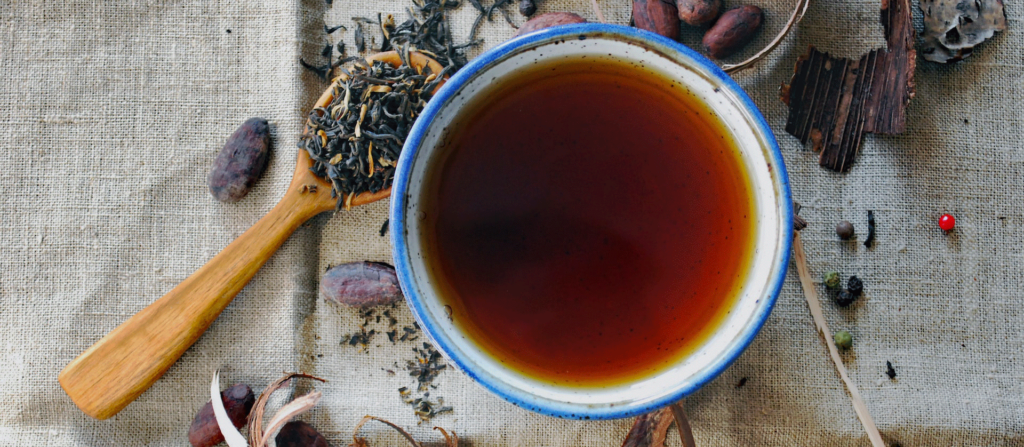
Brewing loose leaf tea is a timeless ritual, an art form that melds precision with passion to create the perfect cup of liquid poetry. Whether you’re new to the world of tea or a seasoned enthusiast, let’s embark on this flavorful journey together with step-by-step instructions for brewing loose leaf tea.
Step 1: Choose Your Tea
The adventure begins with selecting the tea that resonates with your mood and cravings. Are you in the mood for the brisk allure of black tea, the soothing embrace of herbal infusions, or the delicate charms of green tea? The type of tea you choose will guide your brewing process.
Step 2: Assemble Your Tools
Before we dive into the brewing process, gather your essential tea-brewing tools:
- Teapot or Teacup: Your vessel of choice for the tea-making magic. Ensure it’s clean and ready to host the infusion.
- Tea Infuser or Filter: To cradle and contain your loose leaf tea during the brewing process. If your teapot has a built-in infuser, that’s splendid too.
- Kettle: The trusty steed that heats your water. It can be an electric kettle or a stove-top one, whichever you prefer.
- Thermometer (Optional): For those who appreciate precision, a thermometer can be handy to monitor water temperature.
Step 3: Heat Your Water to the Right Temperature
Water temperature is your canvas; the right temperature will bring out the nuances of your chosen tea. Here’s a quick reference for different tea types:
- Green Tea: Heat water to about 175°F (80°C). It should be steaming but not boiling, as boiling water can make green tea bitter.
- Black Tea: Bring water to a rolling boil and then let it cool slightly to around 200°F (93°C).
- Oolong Tea: Aim for a temperature between 185-205°F (85-96°C), depending on the oolong’s type.
- Herbal Tea: Typically, boiling water, around 212°F (100°C), is ideal to extract the full flavor and aroma of herbal infusions.
| Tea Type | Temperature |
| Green Tea | 175°F (80°C) |
| Black Tea | 200°F (93°C) |
| Oolong Tea | 185-205°F (85-96°C) |
| Herbal Tea | 212°F (100°C) |
Step 4: Measure Your Tea Leaves
The secret to a stellar cup lies in the tea-to-water ratio. As a general guideline, use roughly 1 teaspoon of loose leaf tea for every 8 ounces (240 ml) of water. Feel free to adjust to your taste preferences for a stronger or milder brew.
Step 5: Steeping Time and Technique
Now, it’s time to bring your masterpiece to life. How you steep your tea will influence its flavor and aroma:
- Green Tea: Steep for 2-3 minutes with water just below boiling.
- Black Tea: Find the sweet spot of 3-5 minutes with boiling water.
- Oolong Tea: Light oolongs love 3-5 minutes, while darker ones shine with 5-7 minutes of steeping.
- Herbal Tea: Typically, herbal infusions need about 5-7 minutes to fully unfurl their flavors.
Step 6: The Brewing Process
Finally, it’s time to brew:
- Preheat Your Teapot or Teacup: Pour a small amount of hot water into your chosen vessel and swirl it around to warm it. This ensures your tea stays at the right temperature during brewing. Discard the water.
- Add Your Tea Leaves: Place the measured loose leaf tea into your teapot or teacup.
- Pour the Hot Water: Gently pour the hot water over the tea leaves, ensuring they are fully immersed.
- Cover and Steep: Place a lid or saucer over your teapot or teacup to trap the enchanting aromas. Follow the recommended steeping time for your selected tea type.
- Strain or Remove the Leaves: To prevent over-steeping, which can make your tea bitter, use a strainer or remove the leaves as needed.
- Sip and Savor: At last, the moment of bliss arrives. Sip your artfully brewed cup of loose leaf tea and let the flavors and fragrances carry you away on a sensory adventure.
Brewing loose leaf tea is an exquisite fusion of science and art, precision and passion. With these steps as your compass, you’ll embark on a tea-tasting voyage that delights your senses and elevates your spirit, one meticulously brewed cup at a time.
The Art of Steeping: Unveiling the Flavor Symphony of Loose Leaf Tea
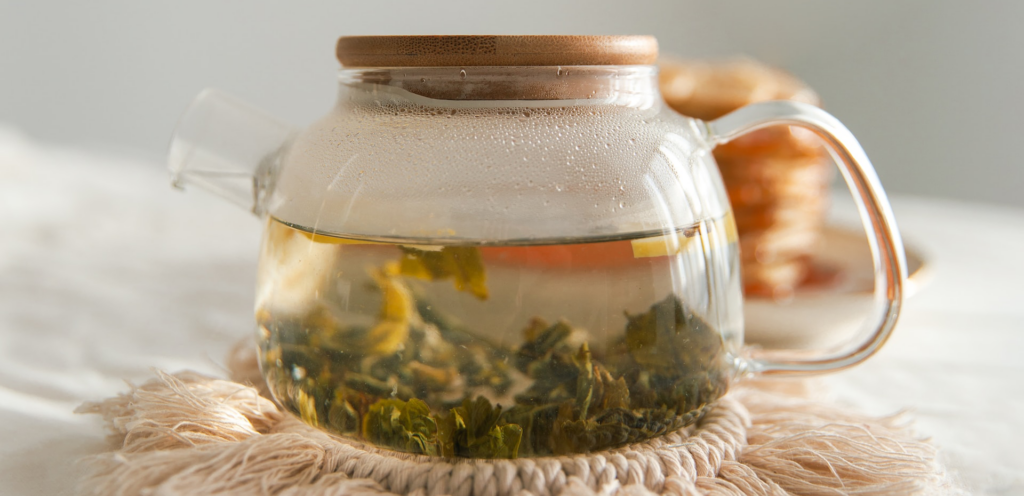
Steeping is the heartbeat of tea, where leaves and water come together in a harmonious dance to create the liquid magic we cherish in our cups. It’s not just a mechanical process; it’s an art. In this chapter, we’ll explore how steeping time affects tea flavor and strength, discuss strategies for adjusting steeping time to personal preference, and uncover the secrets of re-steeping tea leaves.
Steeping Time and Tea Flavor: A Delicate Balance
Steeping time is akin to the conductor’s baton, orchestrating the flavor and strength of your tea. The longer tea leaves mingle with hot water, the more they release their essence. However, there’s a delicate balance to be struck
| Too Short | Just Right | Too Long |
| A brief steeping time can leave your tea weak and lacking in flavor. It’s like a symphony that ends before the crescendo | The optimal steeping time extracts the full range of flavors and aromas, creating a symphony of taste that’s perfectly balanced | Over-steeping can lead to bitterness, overpowering the delicate notes of the tea. It’s like an orchestra playing too loudly, drowning out the subtleties |
Strategies for Adjusting Steeping Time
The beauty of loose leaf tea lies in its adaptability to your personal taste. Here are strategies to tailor steeping time to your preferences:
- Experiment: Start with the recommended steeping time for your tea type, but don’t be afraid to experiment. Try steeping for shorter or longer durations to find your sweet spot.
- Taste as You Go: Sip your tea during the steeping process to gauge its flavor. This allows you to stop steeping at the precise moment when it reaches your desired strength.
- Use a Timer: If you prefer precision, set a timer to ensure consistency. Gradually adjust the steeping time with each cup until it matches your taste.
- Temperature Matters: Remember that water temperature can also influence the steeping process. Cooler water may require longer steeping times, while hotter water may necessitate shorter ones.
- Leaf Size: The size of your tea leaves can impact steeping time. Smaller leaves may release their flavors more quickly than larger, tightly rolled ones.
Re-steeping Tea Leaves: Unlocking Multiple Acts
One of the enchanting aspects of loose leaf tea is its ability to perform encore after encore. Re-steeping tea leaves not only conserves your precious supply but also unveils a different facet of flavor with each act:
- Know Your Tea: Different tea types have varying re-steeping potentials. Generally, green and white teas offer more re-steeps, while black and oolong teas may provide fewer, but richer, acts.
- Time Adjustments: With each subsequent steep, adjust the steeping time. The second steep may require a slightly longer duration than the first, while the third could be longer still.
- Water Temperature: As you re-steep, the water temperature can also be adjusted. Some teas may benefit from slightly cooler water in later infusions to prevent bitterness.
- Enjoy the Evolution: Re-steeping allows you to appreciate the evolving flavors of your tea. Notice how the taste profile changes with each act, unveiling new nuances and subtleties.
- Don’t Rush: Take your time with re-steeping. It’s a patient art, and the rewards are worth the wait.
The art of steeping is a journey of discovery, where you, the tea enthusiast, are both artist and audience. By understanding how steeping time influences flavor and strength, honing your strategies for customization, and exploring the world of re-steeping, you unlock the full potential of loose leaf tea. Each cup becomes a unique performance, a symphony of taste that dances on your palate and warms your soul. So, let the magic of steeping unfold in your teapot, and may your tea adventures be filled with delightful surprises and exquisite flavors.
Serving and Presentation: Elevating the Tea Experience
Serving and pairing tea is a delightful interplay of tradition and modernity, and it varies widely from culture to culture.
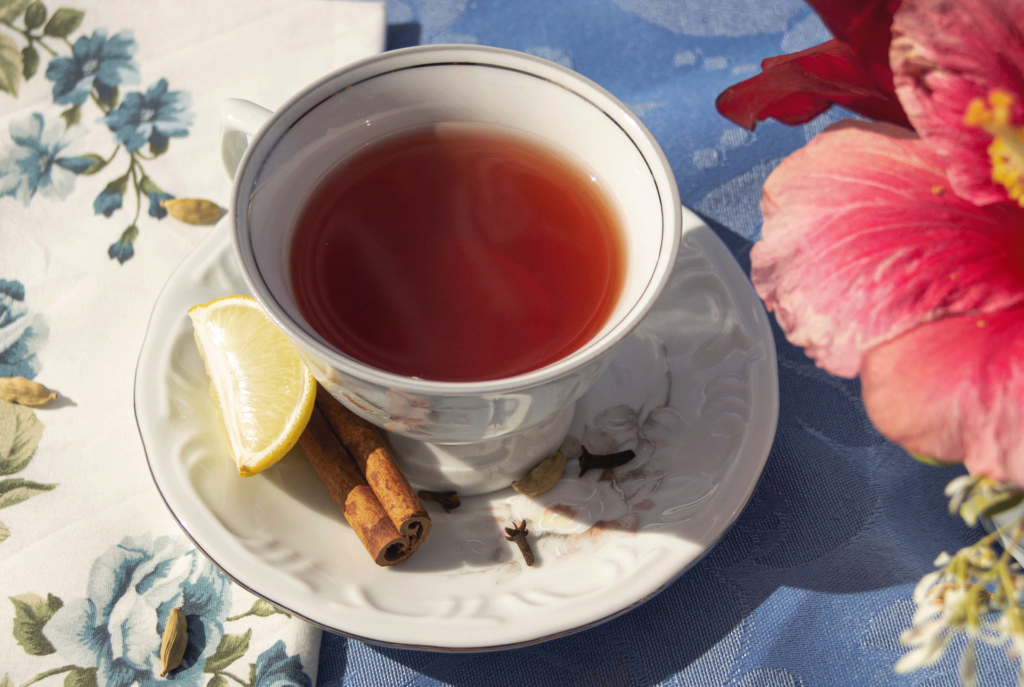
Traditional Practices: From Chinese Gongfu Cha to Japanese Chanoyu, tea ceremonies celebrate centuries-old traditions. In contrast, contemporary practices embrace convenience and personalization, like tea mixology and casual teatime.
The Role of Teaware and Presentation:
Teaware and presentation set the stage for your tea experience. The choice of teapot, teacups, trays, and accessories, as well as how you serve the tea, all contribute to the mood and enjoyment.
Pairing Tea with Snacks or Meals:
Pairing tea with snacks or meals can enhance both. Green tea complements sushi, oolong pairs with dim sum, black tea stands up to pastries, and herbal infusions work well with light meals. The art of pairing is an exploration of flavors and aromas, a diverse culinary tapestry.
In essence, serving and pairing tea is a rich and diverse cultural tapestry, weaving together traditions and modern innovations. It’s an invitation to savor not just the tea, but also the art of presentation and the harmonies of flavor that tea can create with a variety of foods.
Troubleshooting Common Issues: Navigating the Tea Conundrums
In the enchanting world of tea, a perfect cup can sometimes prove elusive. But fear not, for common issues like bitterness, weak flavor, or cloudy tea can be resolved with a little know-how and finesse. In this chapter, we’ll delve into these tea conundrums and provide practical solutions and tips for elevating your tea brewing techniques.
Bitterness: Taming the Tea Beast
Bitterness is often the result of over-steeping, too hot water, or poor-quality tea leaves. Here’s how to bring balance back to your brew:
- Adjust Steeping Time: If your tea tastes bitter, try reducing the steeping time. Start with 30 seconds less than your previous attempt and adjust until you find the sweet spot.
- Temperature Control: Ensure your water temperature matches the tea type. For example, green tea requires water just below boiling to prevent bitterness.
- Quality Tea Leaves: Invest in high-quality loose leaf tea. Inferior leaves or dust in tea bags can lead to a bitter brew.
Weak Flavor: Elevating Your Tea’s Presence
If your tea lacks flavor and depth, you might need to tweak your approach:
- Increase Tea Amount: Use more tea leaves to water ratio for a stronger brew. A simple adjustment can significantly enhance flavor.
- Longer Steeping: Extend the steeping time gradually, but monitor closely to avoid bitterness. Experiment to find your ideal strength.
- Freshness Matters: Ensure your tea is fresh. Over time, tea can lose its flavor, so store it in an airtight container away from light, heat, and strong odors.
Cloudy Tea: Finding Clarity
Cloudy tea can be a result of various factors, including water quality and certain tea types. Here’s how to bring back clarity:
- Water Quality: Use fresh, clean water. Impurities in tap water or hard water can cause cloudiness. Consider using filtered or spring water.
- Avoid Rapid Cooling: Sudden temperature changes can cause cloudiness. Allow your boiled water to cool slightly before pouring it over your tea leaves.
- Tea Type: Some teas, particularly those high in tannin, can naturally appear cloudy when brewed. This doesn’t necessarily indicate a problem with your technique.
General Tips for Improved Tea Brewing
- Be Mindful of Water: Water quality, temperature, and mineral content can all impact your tea. Experiment with different water sources to find what works best.
- Preheat Your Teapot or Teacup: Warming your vessel helps maintain the tea’s temperature during brewing, ensuring a more consistent flavor.
- Experiment and Record: Don’t be afraid to experiment with steeping times, temperatures, and tea-to-water ratios. Keep a tea journal to note what works best for each tea type.
- Use Fresh Tea: Freshness is key. Buy loose leaf tea in small quantities to ensure you’re always working with the best quality.
- Embrace Re-steeping: Many teas can be re-steeped for multiple infusions, so don’t toss those leaves after one cup. Adjust your steeping times for each infusion to enjoy different flavor profiles.
Troubleshooting tea issues is part of the tea enthusiast’s journey. By honing your brewing techniques, selecting quality tea leaves, and making thoughtful adjustments, you’ll master the art of tea brewing and unlock the full spectrum of flavors and aromas that this age-old elixir has to offer. So, sip, savor, and revel in the ever-evolving world of tea.
Health Benefits of Tea: Sip Your Way to Wellness
Tea isn’t just a delightful drink; it’s also a centuries-old elixir known for its potential health benefits. Each type of tea, whether green, black, oolong, white, or herbal, offers a unique array of compounds that can positively impact our well-being. In this chapter, we’ll explore the potential health benefits of different tea types, understand the role of antioxidants and other compounds in tea, and note some important health considerations.

Please note that this part is for general knowledge and should not be considered as medical advice. If you have specific health concerns or conditions, it's essential to consult with a healthcare professional or a qualified medical practitioner.
Green Tea: The Elixir of Longevity
Green tea, celebrated for centuries in Asia, is brimming with antioxidants called catechins. These compounds may help:
- Boost Metabolism: Catechins can aid in fat oxidation, potentially assisting with weight management.
- Enhance Heart Health: Regular consumption is associated with a reduced risk of heart disease.
- Combat Inflammation: The anti-inflammatory properties of green tea may alleviate various ailments.
Black Tea: The Heart’s Ally
Black loose leaf tea tea boasts robust flavor and a heart-healthy profile:
- Cardiovascular Health: Black tea’s antioxidants, theaflavins, and thearubigins, may improve cholesterol levels and promote heart health.
- Mental Alertness: The caffeine content can enhance alertness and focus without the jitters.
Oolong Tea: A Balanced Choice
Oolong tea offers a middle ground between green and black tea:
- Weight Management: Some studies suggest oolong may aid in weight loss by enhancing metabolism and fat burning.
- Dental Health: Oolong’s fluoride content may support oral health by preventing tooth decay.
White Tea: The Delicate Antioxidant Powerhouse
White tea is celebrated for its delicate flavor and potent antioxidants:
- Skin Health: White tea’s antioxidants may protect the skin from UV damage and premature aging.
- Antibacterial Properties: It may help combat harmful bacteria and promote oral health.
Herbal Teas: Nature’s Remedy
Herbal teas encompass a vast array of blends, each with its unique potential benefits:
- Chamomile: Known for its calming effects, chamomile can ease stress and aid sleep.
- Peppermint: Supports digestion and soothes stomach discomfort.
- Ginger: Renowned for its anti-nausea and anti-inflammatory properties.
Role of Antioxidants and Other Compounds
The health benefits of tea are closely tied to its antioxidants. These compounds, including catechins in green tea and theaflavins in black tea, help neutralize harmful free radicals in the body. By doing so, they may reduce the risk of chronic diseases, including heart disease, certain cancers, and age-related conditions.
Tea also contains various vitamins, minerals, and amino acids, contributing to its potential health benefits. For instance, L-theanine in tea can promote relaxation and improve mental focus.
Health Considerations
While tea offers numerous potential health benefits, it’s essential to approach it with consideration:
- Caffeine Content: Be mindful of your caffeine intake, especially if you’re sensitive to it. Herbal teas and certain decaffeinated options can provide a caffeine-free alternative.
- Individual Responses: People react differently to tea, so listen to your body. If you experience any adverse effects, adjust your consumption accordingly.
- Quality Matters: Opt for high-quality loose leaf tea whenever possible, as the quality of the tea can impact its potential health benefits.
In conclusion, tea is more than a beverage; it’s a treasure trove of potential health benefits. Whether you prefer the delicate allure of white tea or the robust notes of black tea, there’s a brew for everyone. By incorporating tea into your daily routine mindfully, you can tap into its potential to enhance your well-being while indulging in its rich flavors and aromas. So, raise your teacup to good health and savor the journey one sip at a time.
Conclusion: Brew, Sip, and Savor the Tea Journey
As we near the end of this tea-tastic journey, let’s recap the key takeaways from our guide to brewing loose leaf tea and the art of tea enjoyment.
- Brewing Expertise: We’ve delved into the art and science of brewing tea. From selecting the right tea type to mastering steeping times and embracing re-steeping, you’ve gained the expertise to craft your perfect cup.
- Tea and Tradition: Tea is not merely a beverage but a rich tapestry of traditions, from intricate ceremonies to casual teatime gatherings. Whether you lean toward tradition or embrace modernity, there’s a world of tea culture waiting to be explored.
- Health and Harmony: Discover the potential health benefits of different tea types, from antioxidants in green tea to heart-healthy black tea. Remember, while tea can be a part of a healthy lifestyle, consult a healthcare professional for specific health concerns.
As we conclude, we encourage you to continue your tea journey with curiosity and creativity. Explore new tea varieties, experiment with brewing techniques, and share the joy of tea with friends and loved ones. Tea is more than just a drink; it’s a delightful fusion of flavors, aromas, and cultural significance.
So, whether you find solace in a quiet cup of green tea, revel in the robust notes of black tea, or unwind with a fragrant herbal infusion, may your tea experiences be filled with pleasure, discovery, and the warmth of shared moments. Raise your teacup high, and here’s to many more delightful sips on your tea adventure. Cheers!

